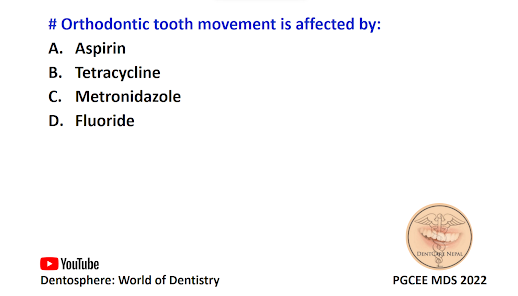# All of the following increase primary stability of miniscrew implants EXCEPT:
A. Cortical predrilling
B. Cortical bone thickness
C. Spongy bone thickness
D. Length or diameter
The correct answer is A. Cortical predrilling
• Studies about various miniscrew designs to improve primary stability are increasing. Different changes in screw diameter, length and the design of the threads have been investigated
• Primary stability is influenced and increased by optimum loading, good bone density, more cortical bone thickness, advance screw design and root proximity.
• Drill free method of MSI insertion is much better than pre-drilled method for primary stability of mini screw implants as in case of pre drilled method more heat is produced which leads to compromised bone regeneration hence jeopardize implant stability.







